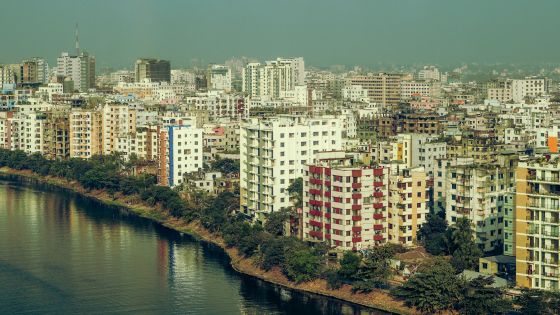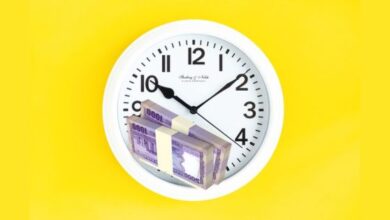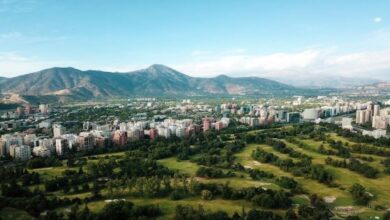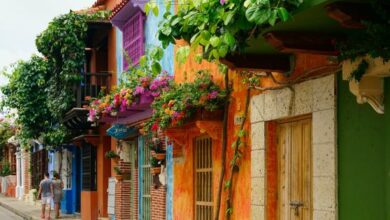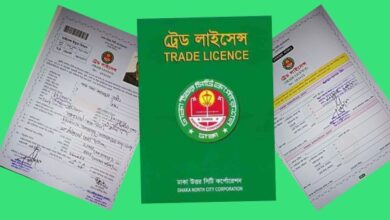History and current situation of Dhaka 2024
Dhaka: A City Steeped in History, Embracing a Modern Future
Dhaka, the vibrant capital of Bangladesh, pulsates with a unique energy. Its story stretches back centuries, a tapestry woven with threads of trade, war, cultural richness, and remarkable resilience. Today, Dhaka is a bustling metropolis, grappling with the challenges and opportunities of the 21st century. Let’s delve into the fascinating history of this city and explore its current situation.
A Journey Through Time: Dhaka’s Historical Tapestry
Imagine Dhaka not as a concrete jungle, but as a bustling riverside town. Archaeological evidence suggests settlements existed in the area as early as the 12th century. However, it was during the Mughal era (16th-18th centuries) that Dhaka truly rose to prominence. Mughal emperors, recognizing its strategic location and fertile land, established Dhaka as a provincial capital. The city flourished as a center of trade, particularly renowned for its exquisite muslin textiles. European merchants flocked to Dhaka, leaving their mark on the city’s architecture and fostering a cosmopolitan atmosphere.
Dhaka’s fortunes fluctuated throughout history. After the decline of the Mughal empire, the city faced periods of stagnation. However, it regained importance during British rule (18th-20th centuries) as a center of administration and commerce. The partition of India in 1947 marked a turning point. Dhaka became the capital of East Pakistan, and its population boomed as refugees poured in.
The struggle for independence in 1971 left an indelible mark on Dhaka. The city witnessed fierce fighting before its liberation and the birth of Bangladesh. Since then, Dhaka has embarked on a journey of transformation, striving to become a modern metropolis.
Dhaka Today: A City of Contrasts
Dhaka is a city of contrasts. Soaring skyscrapers share the skyline with historic mosques and bustling street markets. Modern shopping malls stand in stark juxtaposition to narrow alleyways teeming with life. This city is a sensory overload, a kaleidoscope of sights, sounds, and smells.
A Hub of Industry and Commerce: Dhaka is the economic powerhouse of Bangladesh. Jute processing, textiles, pharmaceuticals, and leather goods are some of the key industries driving the city’s growth. Throngs of people commute daily, fueling the city’s vibrant economy.
A Cultural Tapestry: Dhaka is a melting pot of cultures. Bangladeshi traditions intertwine with influences from Mughal, British, and other South Asian cultures. Magnificent mosques like the Star Mosque and the Baitul Mukarram National Mosque stand as testaments to the city’s rich Islamic heritage. The Dhakeshwari Temple and other Hindu shrines showcase the religious diversity. Dhaka is also a center for music, literature, and art, with numerous museums, theaters, and cultural institutions enriching the city’s soul.
Challenges and Opportunities: Dhaka faces significant challenges. Rapid urbanization has led to overcrowding, traffic congestion, and pollution. The city is also vulnerable to natural disasters like floods. However, Dhaka is a city that never sleeps. Development projects are underway to improve infrastructure, manage waste, and create a more sustainable future. The resilience of its people and the entrepreneurial spirit are Dhaka’s greatest assets.
Looking Ahead: A City on the Rise
Dhaka’s future is full of possibilities. The city is poised to become a major player in South Asia, a center for business, innovation, and cultural exchange. Investing in education, infrastructure, and sustainable development will be crucial for its continued success. Dhaka’s story is far from over. It is a city constantly evolving, a testament to the enduring spirit of its people.
Understanding Dhaka: Addressing Your Questions
Here are some frequently asked questions to solidify your understanding of Dhaka:
I’m interested in visiting Dhaka. What are some must-see attractions?
Dhaka offers a diverse range of experiences. Explore the historic Lalbagh Fort, marvel at the architectural beauty of Mughal mosques, or lose yourself in the vibrant stalls of Chowk Bazaar. Visit the National Museum to delve into Bangladesh’s rich history, or take a boat trip on the Buriganga River for a unique perspective of the city.
What is the best time to visit Dhaka?
The winter months (November to February) offer pleasant weather for exploring the city. However, keep in mind that Dhaka experiences heavy monsoon rains from June to September.
Is Dhaka a safe city for tourists?
Dhaka is generally safe for tourists who exercise caution. Be aware of petty theft and take common-sense precautions. It’s always a good idea to dress modestly and respect local customs.
Dhaka Today: A City of Contrasts
A Culinary Paradise: Dhaka’s food scene is a celebration of Bangladeshi flavors. Spicy curries, fragrant rice dishes, and fresh seafood are staples on the menu. Street food is an integral part of the city’s culture, offering a delicious and affordable way to experience local flavors. Sample piping hot samosas, melt-in-your-mouth kebabs, or the iconic phuchka (fried dough balls filled with tangy potatoes and chickpeas). For a more refined dining experience, head to upscale restaurants showcasing Bangladeshi cuisine with a modern twist.
A Center for Education: Dhaka is a hub for education in Bangladesh. The city boasts prestigious universities like the University of Dhaka and Bangladesh University of Engineering and Technology (BUET), attracting students from all over the country. A growing number of international schools and private universities cater to a global audience. Education is seen as a pathway to a brighter future, and Dhaka is committed to providing its youth with the opportunities to succeed.
A Social Hub: Dhaka comes alive after sunset. Families gather at tea stalls, friends catch up at cafes, and young people flock to trendy restaurants and bars. Cricket, the national sport, is a unifying force, bringing people together to cheer for their favorite team. Dhaka’s social scene is vibrant and diverse, reflecting the city’s youthful energy.
Environmental Challenges: Rapid urbanization has taken a toll on Dhaka’s environment. Air and water pollution are major concerns. The city also faces challenges with waste management and sanitation. However, there is a growing awareness of these issues. Initiatives are underway to promote sustainable practices, reduce pollution, and create a greener Dhaka.
A City of Resilience: Despite its challenges, Dhaka is a city that never gives up. The indomitable spirit of its people is evident in their warmth, hospitality, and unwavering optimism. Dhaka is constantly striving to improve, to overcome obstacles, and to build a brighter future for its citizens.
A City on the Move: Dhaka’s future is bright. The city is poised to become a major economic and cultural hub in South Asia. Investment in infrastructure, technology, and education will be crucial for its continued growth. Dhaka’s story is a testament to the power of human resilience and the potential for transformation.
Deeper Dive: Unveiling the Layers of Dhaka
Dhaka’s multifaceted character offers endless opportunities for exploration. Here’s a glimpse into some aspects that deserve a closer look:
A Rich Literary and Artistic Heritage
Dhaka is a city that breathes literature and art. The rich literary tradition of Bengal flourishes here. Rabindranath Tagore, the Nobel laureate poet, called Dhaka his home. His former residence, now a museum, is a pilgrimage site for literature lovers. Bangladeshi writers continue to produce captivating novels, poems, and short stories that resonate with local and global audiences.
The city’s art scene is equally vibrant. The National Art Gallery showcases a collection of Bangladeshi art, from traditional Mughal miniatures to contemporary works. Independent art galleries and studios provide platforms for emerging artists to experiment and showcase their talent. Street art adds pops of color to the urban landscape, expressing social commentary and local narratives.
A Gateway to Bangladesh’s Natural Beauty
Dhaka might be a bustling metropolis, but a nature escape isn’t far off. Venture out to explore the Sundarbans, the world’s largest mangrove forest, and witness the majestic Royal Bengal tigers roaming free. The nearby Cox’s Bazar coastline, with its pristine beaches and laid-back charm, offers a relaxing retreat. For a historical and cultural immersion, visit the ancient city of Mahasthangarh, or explore the scenic beauty of the Sylhet region, known as the “Land of Lakes.” Dhaka serves as a convenient base to explore the diverse landscapes and rich cultural heritage of Bangladesh.
A City of Festivals and Celebrations
Dhaka comes alive during festivals. Pohela Boishakh, the Bengali New Year, is a joyous celebration marked by colorful processions, cultural performances, and delicious traditional foods. Eid al-Fitr, marking the end of Ramadan, fills the city with an atmosphere of festivity and generosity. Durga Puja, the vibrant Hindu festival honoring the goddess Durga, transforms Dhaka with elaborate pandals (temporary structures) and joyous rituals. Throughout the year, Dhaka pulsates with the rhythm of festivals, showcasing the rich tapestry of Bangladeshi culture and traditions.
Experiencing the Real Dhaka:
For a truly immersive experience, go beyond the tourist hotspots. Take a rickshaw ride through narrow alleys, explore local markets, and strike up conversations with friendly residents. Sample street food from bustling stalls and discover hidden gems nestled within the city. Dhaka rewards those who venture off the beaten path, offering a glimpse into the heart and soul of this captivating metropolis.
Engaging with the Community:
Dhaka offers opportunities to connect with the local community and contribute to positive change. Volunteer at NGOs working on issues like education, environmental sustainability, or women’s empowerment. Support local artisans by purchasing handcrafted souvenirs. Learning a few basic Bengali phrases will go a long way in fostering connections with the warm and welcoming people of Dhaka.
By delving deeper into Dhaka’s cultural tapestry, natural wonders, and opportunities for meaningful engagement, you’ll gain a richer understanding of this dynamic city and its people.
The Future Beckons: Challenges and Opportunities for Dhaka
Dhaka, like any major city, faces its share of challenges. However, its future holds immense potential. Here’s a closer look at both sides of the coin:
Challenges and Hurdles: Navigating Dhaka’s Complexities
-
Urban Planning and Infrastructure: Rapid urbanization has strained Dhaka’s infrastructure. Traffic congestion, inadequate public transportation, and a shortage of affordable housing are pressing issues. Investing in sustainable urban planning and infrastructure development is crucial for the city’s long-term growth.
-
Environmental Concerns: Air and water pollution pose significant health risks in Dhaka. The city also struggles with waste management and sanitation. Embracing renewable energy sources, promoting green spaces, and implementing stricter environmental regulations are essential steps towards a cleaner and healthier Dhaka.
-
Climate Change: Dhaka is vulnerable to the effects of climate change, including rising sea levels and more frequent floods. Developing adaptation strategies and investing in disaster preparedness will be critical to protect the city and its residents.
-
Social Inequality: Dhaka grapples with issues of poverty and social inequality. Slums house a significant portion of the population, lacking access to basic amenities like sanitation and healthcare. Investing in social programs, promoting inclusive growth, and creating opportunities for all are crucial for a more equitable Dhaka.
Turning Challenges into Opportunities:
Despite these challenges, Dhaka is a city brimming with potential. Here’s how these challenges can be transformed into opportunities:
-
Smart City Solutions: Dhaka can leverage technology to become a smarter city. Traffic management systems, waste management solutions, and digital governance initiatives can improve efficiency and quality of life.
-
Green Dhaka: Investing in renewable energy sources like solar power and promoting green building practices can create a more sustainable future for Dhaka. Protecting natural resources and creating green spaces can improve air quality and enhance the city’s livability.
-
Innovation Hub: Dhaka’s young and tech-savvy population presents an opportunity to foster innovation. Supporting startups, promoting entrepreneurship, and creating a knowledge-based economy can propel Dhaka towards a brighter future.
-
Investing in People: Education and skills development are key to unlocking Dhaka’s full potential. Investing in education, healthcare, and social programs can empower the city’s residents and create a more inclusive society.
Dhaka’s journey of transformation will require a collaborative effort from the government, private sector, and citizens alike. By acknowledging the challenges and embracing innovative solutions, Dhaka can become a thriving metropolis, a model for sustainable development, and a testament to the indomitable spirit of its people.
Beyond the Guidebooks: Unveiling Dhaka’s Hidden Gems
Dhaka’s charm extends far beyond the well-trodden tourist path. Here’s a glimpse into some hidden gems waiting to be discovered:
A Journey Through History: Lesser-Known Monuments
- Lalbag Fort Weekend: Venture beyond the Lalbag Fort’s main attractions and explore the serene Ahsan Manzil, a 19th-century Mughal-style palace, during its special weekend openings.
- Armenian Church: Nestled amidst bustling streets, discover the historic Armenian Church, a testament to Dhaka’s rich multicultural heritage. Marvel at its unique architecture and serene atmosphere.
- Star Mosque by Night: Witness the mesmerizing beauty of the Star Mosque bathed in the soft glow of evening lights. The intricate tilework shimmers under the moonlight, creating a truly magical experience.
A Culinary Adventure: Off the Beaten Path
- Shantinagar Street Food: Ditch the fancy restaurants and delve into the heart of Shantinagar, a paradise for street food enthusiasts. Sample an array of delicious and affordable local delicacies, from piping hot jalebis to melt-in-your-mouth rosgullas (syrup-soaked cheese balls).
- Nawab Bari Cuisine: Experience a taste of Dhaka’s aristocratic culinary heritage. Indulge in a Nawabi feast at a traditional Nawab Bari (palace) restaurant, savoring dishes like Mughlai curries and melt-in-your-mouth kebabs.
- Boat Restaurants: Embark on a culinary cruise on the Buriganga River. Several boat restaurants offer a unique dining experience, allowing you to savor delicious Bengali cuisine while enjoying stunning views of the city skyline.
A Cultural Immersion: Beyond the Museums
- Saree Shopping in Dhanmondi: Immerse yourself in the vibrant world of sarees at Dhanmondi, a haven for textile enthusiasts. Explore countless shops overflowing with colorful sarees, traditional silks, and handcrafted textiles, perfect souvenirs or gifts.
- Baul Performances: Witness the soulful melodies of Baul music, a unique Bengali folk tradition known for its poetic lyrics and spiritual themes. Attend a Baul performance at an intimate venue and connect with the heart and soul of Bengali culture.
- Local Crafts: Discover hidden gems at independent craft stores and workshops scattered throughout the city. Support local artisans by purchasing handcrafted jewelry, textiles, pottery, and other unique souvenirs that capture the essence of Dhaka.
Embracing the Unexpected:
Dhaka’s hidden gems are often discovered by simply wandering and embracing the unexpected. Strike up conversations with friendly shopkeepers, explore charming back alleys, and let the city unfold its secrets before you. This is where you’ll experience the true essence of Dhaka, far from the crowds and tourist traps.
A Local’s Perspective:
For an even more enriching experience, connect with a local. Join a walking tour led by a passionate Dhaka resident eager to share their city’s hidden corners and untold stories. Staying at a local homestay allows you to experience Dhaka through the eyes of its people, gaining a deeper understanding of their way of life.
By venturing beyond the guidebooks and embracing the unexpected, you’ll discover a side of Dhaka that’s authentic, vibrant, and truly unforgettable.

